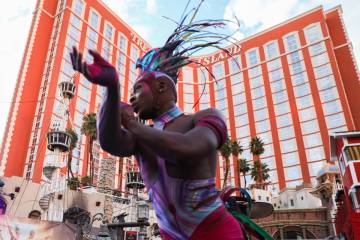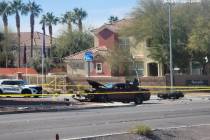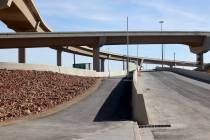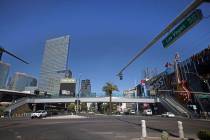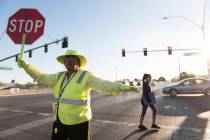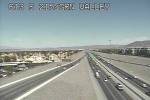Motorist inquiry: Stop on yellow light or race through the insersection?
Anyone who has ever driven a car has experienced this dilemma at one time or another.
You’re cruising along a city street at the speed limit and being the conscientious driver you are, keeping a close watch on what the traffic is doing ahead of you, behind you and in the lanes around you.
Suddenly, someone in a vehicle with superior horsepower gets behind you and gets right on your rear bumper.
As you head toward an intersection, the light changes. That scenario sets the stage for Warrior reader Sam’s question:
“I try my best to stop at yellow lights and rarely try to beat it. Unfortunately, this has caused near-accidents with cars (yes, multiple vehicles) behind me slamming on their brakes or trying to shift to a different lane and race through the intersection. Should I change my ways in order to prevent these near-misses or continue to obey the law but increase my odds of being rear-ended by inattentive or impatient fellow drivers who have no time for yellow lights?”
Congratulations, Sam, for being a safe and conscientious motorist. The bottom-line answer from Nevada Highway Patrol trooper Loy Hixson is don’t change your ways.
The relevant passage from the Nevada Revised Statutes is, “Where the signal is a steady yellow signal alone ... vehicular traffic facing the signal is thereby warned that the related green movement is being terminated or that a steady red indication will be exhibited immediately thereafter, and such vehicular traffic must not enter the intersection when the red signal is exhibited.”
In other words, you shouldn’t enter the intersection after the light turns red.
Some drivers think a yellow light means “I must stop,” Hixson said. But what it really means is, “The light is about to turn red and if it turns red before you reach the intersection, you’ll be breaking the law.”
But there’s a catch. Another section of the statute says motorists should not speed up to beat the red light.
The text of that section says, “The fact that the speed of a vehicle is lower than the prescribed limits does not relieve a driver from the duty to decrease speed when approaching and crossing an intersection ...”
In other words, you shouldn’t speed up to beat the appearance of the red light. Any motorist who changes lanes to get around would, in all likelihood, have to speed up to do so.
What’s tough is that every day, we must make split-second decisions that could have life-and-death consequences. If I obey the law, I risk being rear-ended. If I disobey, I break the law and could endanger someone else in the intersection — and I’m inviting the guy behind me to make a bad situation worse.
Hixson’s advice to Sam is to stay the course.
“Don’t let other drivers prescribe the way you drive,” Hixson said. “You don’t want the situation to evolve into a road-rage incident, but nobody should force you to drive in an unsafe manner. Keep driving with your safe habits and if the motorist behind you chooses to violate the law, we’ll catch them eventually.”
STREET MEMORIALS
Warrior reader Anne has a question about memorials and shrines on local streets and highways:
“I assume that those crosses with flowers, etc., that are beside the highways are memorials for persons who have died in that location. And there must be some provision in the laws for these to exist.
“I wonder if those same laws prevail when memorial crosses are placed in city or county locations. I’m not talking about those instantaneous gatherings of flowers and stuffed animals that occur when someone has been killed or badly hurt, and which go away after the publicity surrounding the event abates.
“There are existing crosses and flowers at the intersections of Cimarron and Craig (although this one doesn’t seem to be refreshed often) and a large one at the intersection of Lone Mountain and El Capitan. I’m not aware of deaths occurring at these locations.
“What is the law concerning these exhibits? Is a permit required? Is a fee required? What happens if the exhibit is not kept up — is there a time limit on them?”
“There’s no set policy in place, but county personnel understand that there’s a grieving process so out of respect for the extended family, we generally accept and honor that grieving process,” Clark County spokesman Dan Kulin said. “If someone calls with a complaint, our public works department looks into it and takes action as necessary.”
Kulin said there are no fees or fines in place for such displays.
“We’ve allowed some memorials to stay in place for up to six months, but in most cases, they’re gone within two,” he said.
Henderson has a similar policy.
“The city of Henderson does not have a specific policy in place regarding roadside memorials,” spokesman Keith Paul said. “Many times these memorials are removed by family and friends after a period of time. We would respond to complaints regarding ongoing roadside memorials, but there have been no complaints and no issues of impeding traffic.”
Questions and comments should be sent to roadwarrior@reviewjournal.com. Please include your phone number. Follow the Road Warrior on Twitter @RJroadwarrior.







